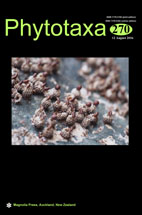Abstract
The genus Omphalodes (Boraginaceae) has recently been shown to be polyphyletic. Two distantly related lineages have already been segregated into the genera Memoremea (Central Europe) and Nihon (East Asia), respectively. We expanded the taxon sampling in the Omphalodeae and confirm that the genus is still paraphyletic to the two monotypic genera Selkirkia from the Juan Fernández Islands off the coast of Chile and Myosotidium from Chatham Island off the coast of New Zealand, plus two South American species currently assigned to Cynoglossum, and one species recently segregated from the latter genus as Mapuchea. Four clades are retrieved in a narrowly delimited Omphalodes group: 1) Iberodes, the annual southwestern European species of Omphalodes s.l. that have been recently segregated into this genus, 2) Omphalodes s.str., perennial western Eurasian species (including the type species of the genus), 3) the North American species of Omphalodes, and 4) the southern hemispheric Myosotidium as sister to a monophyletic group with Mapuchea plus the two other South American species of “Cynoglossum” and the island shrub Selkirkia berteroi. We argue that the taxa of this latter clade are best placed into an expanded genus Selkirkia. Selkirkia then represents a morphologically coherent entity with glochidiate nutlets. Its considerable difference in vegetative morphology to Myosotidium is easily explained by the highly divergent habitats the respective plants occupy. Lectotypifications, illustrations, and descriptions are provided for Myosotidium and the species of the expanded genus Selkirkia.

